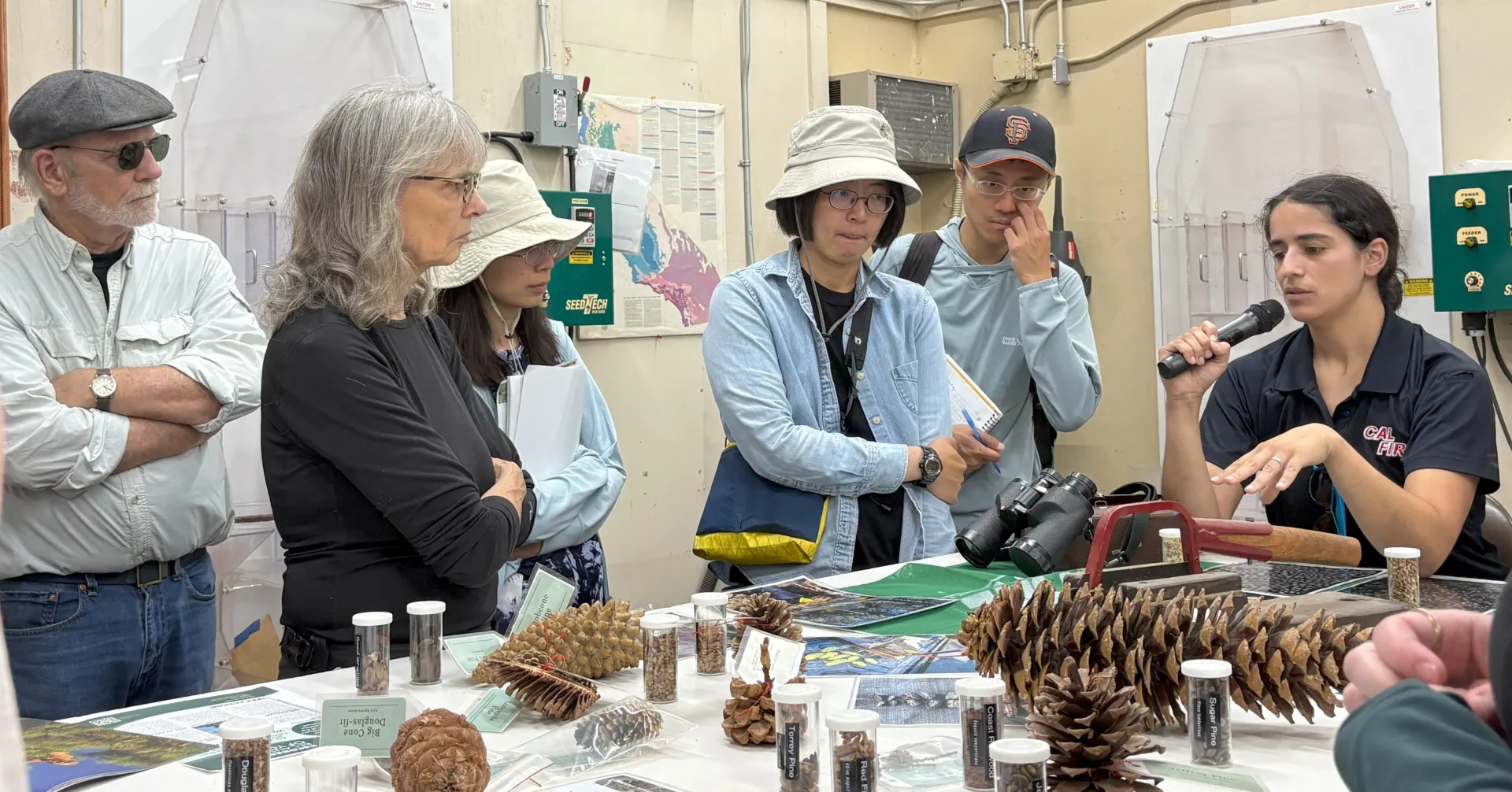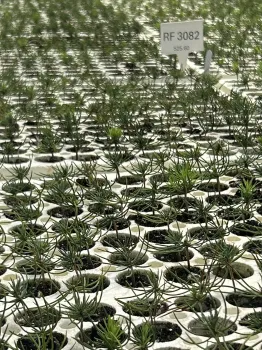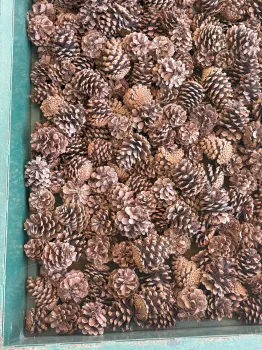
Summer days call for unique ways to beat the heat, so here’s a well-kept secret: the best place to cool off is a warehouse-sized freezer, tucked away at CALFIRE’s Lewis A. Moran Reforestation Center (LAMRC). The freezer’s primary residents are thousands of tree seeds: species like Jeffrey pine, Douglas -fir, and ponderosa pine, stored at frigid temperatures until they can be planted and nurtured into seedlings. A fan-favorite stop on LAMRC tours, the seed freezer is just one piece of the cone-to-seedling pipeline.
UC ANR’s Forest Stewardship Education (FSE) program recently invited forest landowners and forestry professionals to tour the Reforestation Center. While 9-week regional workshops are FSE’s primary form of landowner outreach, the team will also host field trips to discuss pertinent forest stewardship topics. With California's fire season underway, the timing was ideal for a day focused on the reforestation cycle and resources for the public.
Landowners, natural resource professionals, and academics all gathered to see the cone-to-seedling process up close. Guided by various CALFIRE LAMRC employees, participants learned how the agency collects and processes cones, sorts viable seeds, grows and nurtures seedlings, and provides healthy trees to the public.


California is home to only three seed banks: LAMRC, US Forest Service’s Placerville Nursery, and MAST Reforestation. The USFS nursery provides seeds and saplings for federal land, and MAST’s sapling offerings are limited to their work area, making LAMRC the only bank that can provide seeds and saplings for landowners across California.: “This is the only conifer seed bank for the public in California,” stated Marisol Villarreal, LAMRC Assistant Seed Bank Manager. For forest landowners seeking to replant burned or pest-affected forests, LAMRC is often their only option for sourcing climactically appropriate seed and seedlings.
To meet landowner needs, CALFIRE requires access to the right seed source. A seedling sourced from one area, or ‘seed zone’, will struggle to survive on a parcel with vastly different environmental conditions. On the tour, Villarreal shared that “Most of the seed need is for private landowners at lower elevations,” and LAMRC Operations Manager Kuldeep Singh noted that “For us to provide seedlings for the entire state, we rely on assistance from Resource Conservation Districts (RCDs) and private landowners.” Increased outreach to private landowners has been a priority for CALFIRE, both to sell seedlings and source the seed itself.
Jake and Melissa Lehr are forest landowners in Sonoma County who attended the field day, curious about their stewardship options post-fire. “Our parcel burned in the Tubbs Fire,” shared Melissa. “We wanted to come to the field day because our oaks are doing really well, but we are looking to reforest areas where there used to be Douglas-firs.” The Lehrs shared that it was helpful to understand the time and labor required to grow a seedling, “if I ordered one now, it would take a long time to get here!” Melissa noted. They also underscored the urgency for more landowners to know about this public resource. “No one, not our neighbors or our friends know about this,” they agreed. “And they need to know. This is such an important resource for us.”
Another participant shared that she left the field day feeling inspired to do exactly that: spread the word. Genevieve Tarino is a Forestry Project Manager with the Sonoma RCD and works with private landowners like Jake and Melissa. “I had heard about tree nurseries and seed banks like this one, but have never actually seen one in person,” she said. “In our area, there’s a need for these seedlings. There are a lot of trees infected by pests and diseases on private land that need to be removed and then the area needs to be replanted.”
The tour concluded at L.A Moran’s shade houses, the final step in the cone-to-seedling pipeline. While participants walked among rows of conifer and hardwood seedlings, LAMRC staff noted that crews were currently out in the forest, collecting cones for another batch of seedlings.
For more information on reforestation in California, see the resource links below.
